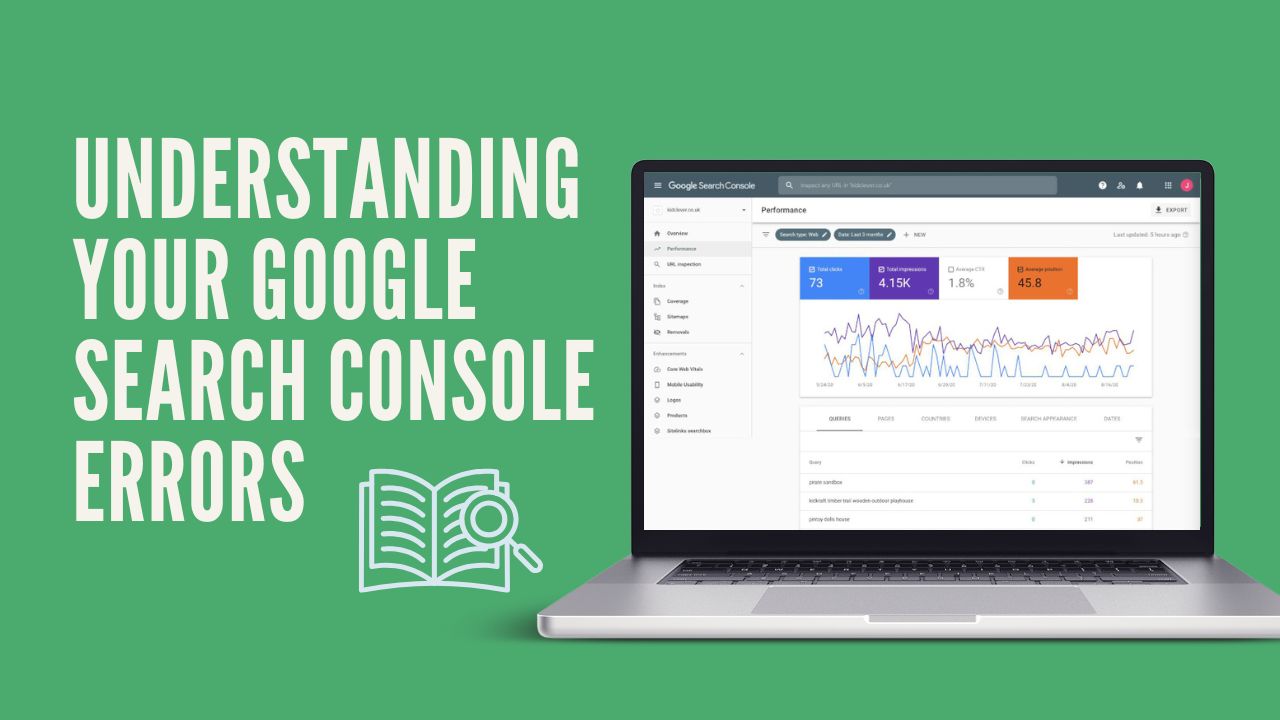Help Centre
Google Search Console is an incredibly valuable tool when it comes to helping you to improve your website’s SEO. It will help you to get your pages indexed faster, tell you how you’re performing for your keywords and identify potential areas of your site you should fix.
The Pages Report (under indexing in the left-hand menu) is where Search Console will highlight a number of potential issues to you about your site.
However, this report is far more daunting than it needs to be, with potential issues being the key focus here. A lot of the notices served in this report aren’t actually issues that will impact your site at all.
This article will run through the key issues that come up in this report and whether there is any action you need to take.
Page with redirect
Redirects are typically a means to send a person who is trying to land on an old page to a new or more relevant piece of content. Where this is the case, redirects pass on SEO authority from the old page to the new one.
This notice is letting you know that there is a redirect in place. This isn’t a problem unless multiple redirects exist before someone lands on the latest piece of content.
You may have set your own redirect using our Custom Redirects Tool. If this is the case, you can manage your redirects here.
Any other redirects will have been put in place by our system due to capitalisation. You’ll likely find a few of these notices are for shop pages. It's making sure everything is consistent and there's no threat of duplicate content due to capitalisation inconsistencies.
There is often no action needed to be taken in this section and more just something to be aware of. It's also useful to know from this report that Google is noting redirects you may have manually created and that these are behaving as expected.
Not found (404) or Soft 404 | Take Action
A 404 occurs when a person tries to land on a page that doesn’t exist. This could be because they’ve clicked a link that exists somewhere to a page that you’ve deleted or they’ve typed a URL in wrong.
404 errors will inevitably occur at some point and are usually an easy fix. You can create a custom 404 page to ensure your visitors who encounter this error know where to go next.
To fix 404 errors that are caused by incorrect links on your website, we recommend using the Broken Link Checker. This will run a report so you can see where you have links on your site to pages that no longer exist. Once you’ve found them, it’s simply a case of replacing that link with a new one or removing it altogether.
Excluded by ‘noindex’ tag / Blocked by robots.txt
These two errors are nothing to worry about. By default, our system will block certain pages of your site that shouldn’t appear in Google using robots.txt. For example, the checkout page on your site.
There is no benefit to having pages such as this appear on a search engine and would just be confusing as part of the customer journey. Again, this isn’t an error, but this Search Console report is there to let you know that this is happening.
If there are other pages you don’t want to appear in search (say for example, a page for members-only exclusive content) your robots.txt file is customisable and you can find out more about doing so in our help guide.
Alternative page with proper canonical tag
This notice is nothing to worry about. This will occur when there are two versions of a page. Most times it's a desktop vs. mobile view.
This notice is saying that Google has identified that there are two versions of the page, but it knows which one needs to be indexed and will disregard the other so you don’t have to worry about any duplicate content issues.
Discovered - currently not indexed
This means that Google knows your content exists but hasn’t placed it anywhere in the search results yet. This could be that it has prioritised other demands for your site before indexing your page.
If you’ve found this error, it will likely resolve itself with time. However, you can specifically request Google prioritise indexing certain pages by entering the URLs in the URL inspection tool.
Crawled - currently not indexed | Take Action
This is different from the previous notice we’ve just covered. This means that Google has found your content, crawled it, but decided not to place your page in the search results.
This will be because it isn’t quite clear enough yet what the content should be showing for in search results.
To fix this notice, you’ll need to do some keyword research to find an opportunity to rank the page for. You can then use the SEO Content Checklist to make sure your page is optimised for this keyword. When you’ve done this, simply resubmit the page to be indexed using the URL Inspection Tool.
Duplicate, Google chose a different canonical to the user
Again, this notice occurs when there are two versions of a page URL somewhere. This is most likely just a broken link somewhere. It may be fixed by your broken link check, it might just go away in time.
This notice is nothing to worry about as it says that Google has found the proper page and has chosen to ignore the other.
Duplicate without user-selected canonical
When you see this appear in your report, it means that Google has found an instance where duplicate content has appeared on your site and the pages included have not indicated which piece of content is the main one.
In the vast majority of cases, what will have happened is that your main piece of content has been indexed fine and these duplicates will eventually be disregarded and dropped from the report as anomalies.
If you’re concerned, you should open up this notice and see what pages are affected. The pages will likely be of no importance and you don't need to worry about them. If you wanted to take action, you could set up a custom redirect to point your visitors to your main piece of content without having to worry about duplication.
Wrapping Up
As you can see, most of the issues here require no action. You may find some disappear over time, but most are perfectly natural occurrences when running a website.
Be sure to keep an eye on your 404 errors and fix them regularly. We recommend checking at least once a month.
We also recommend checking out our articles on Keyword Research and the SEO Content Checklist to help reduce the chances of encountering the “Crawled - Currently not indexed” notice.
Regularly submitting your sitemap is also good practice and can resolve many of these notices.
Have you come across a notice not mentioned here? Be sure to pop your Account Manager a message and they will be able to help advise further.
Related Articles
Related Articles
More Questions?
If you have any further questions, please get in touch and we will be happy to help.
Get in Touch



